Another day in Thimphu and it began with a visit to The National Memorial Chorten – a prominent landmark and religious centre for the Bhutanese.It was not far from the hotel and the huge white structure with the gleaming golden spire could be seen from far.Going to this shrine every morning is a ritual for the devout Bhutanese.

National Memorial Chorten

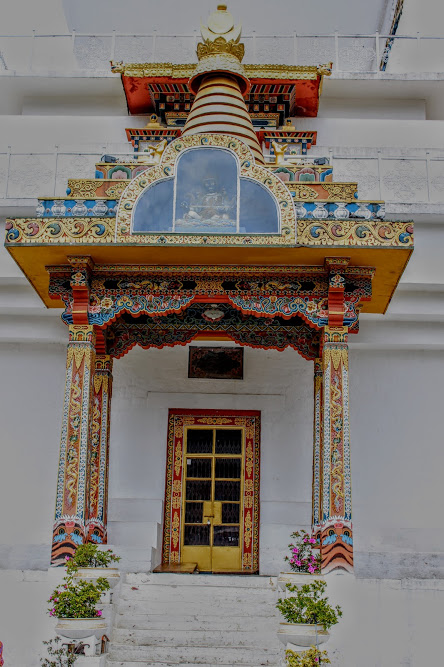
The Temple
Many elderly men and women are seen in the premises engaged in prayers and circumambulating the main shrine.Some are seen spinning the giant prayer wheels and prostrating in prayers.This is not so easy and I was wondering how some of those frail old Bhutanese were doing it with such ease and remarkable grace. A group of ladies were relaxing around the central pavilion.This must be their favourite place for meeting friends.

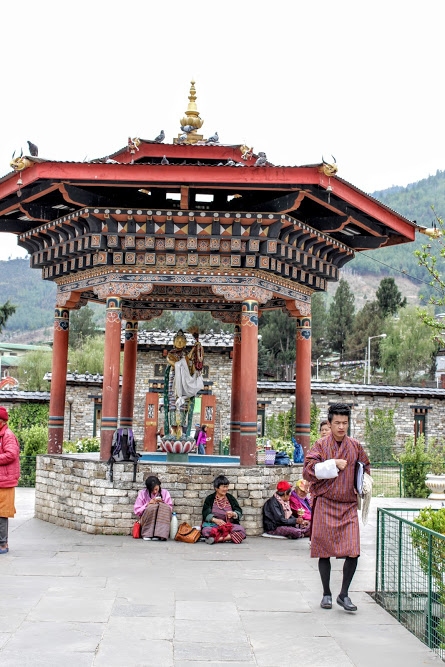

From the chorten I went to see the Centenary Farmers Market.This sprawling 2 storey building is the largest domestic market for the local farmers. Being a week day it was not crowded and I could explore it leisurely.There are about 400 stalls displaying local and imported produce of vegetables,fruits,cheese, rice,spices etc.The whole market is kept remarkably clean and everything is clearly marked.


Fresh organic local fruits
Bhutan has banned the use of pesticides and agriculture is wholly organic .Most of the Bhutanese are non vegetarians and red rice,meat,cheese and chillies form their staple diet.Chillies are an integral part of their cuisine and is used more like a vegetable than a spice. Ema datshi is the national dish and it is made of chillies and cheese. Cheese products are seen in all shapes and sizes.Asparagus and fiddlehead ferns called Nakey were in season .I had them almost every day and found it quite tasty.There is a section for dried fish and meat but the odour kept me away.
As I came out of the market I saw a bridge and had to go there.Bhutan being a country with rivers has many bridges and most of them are pieces of art unlike the nondescript structures I have seen in India.This one was also painted in bright colors and decorated with prayer flags .



Aesthetic and elegant
I spotted a pair of school girls and followed them to the other side and found many empty stalls . The bubbly girls informed that this is the place for the weekend handicrafts market.


Leaving these charming girls I made my way to the National Institute for Zorig Chusum(Zo=to make,rig=science,chusum=13)Here the students learn 13 forms of art and craft which includes weaving,masonry,sculpting and painting. It is admirable that the government has taken measures to preserve and promote their traditional art.The courses take 4-6 years.

National Institute for Zorig Chusum
I went inside the classrooms and saw many young students . Some of the classrooms looked crowded – could be the junior grades. They seemed to be engrossed in their studies and I felt I was invading with my camera though I was told that they are quite used to visitors. I was not convinced and preferred to observe their meticulous work .It was impressive to see the talented youngsters.Girls were seen mostly in the embroidery and sculpture classes and boys dominated the painting section.I spoke to one of the teachers who showed these sketches by the students and gave an insight into the curriculum.
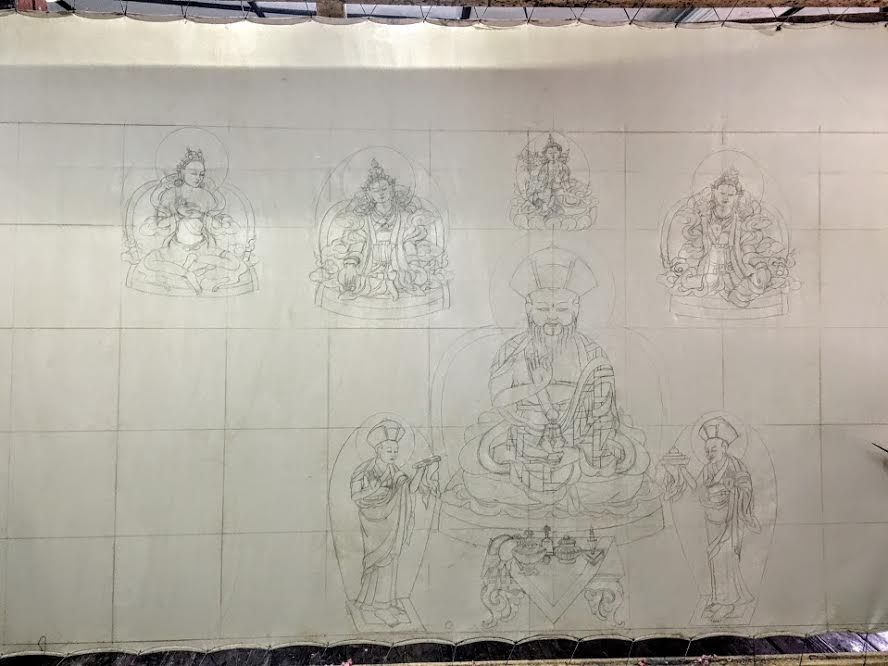

Bhutanese art is also deeply rooted in Buddhism and was formally categorised into the 13 traditional art forms towards the end of 17th century.Some of the eminent lamas themselves were great artists .
It was interesting to know that they use natural pigments and dyes and they have to follow a set of iconography rules.Art is considered a pious act and the artists remain anonymous. So what about artistic freedom?There are some art studios in the city that promote contemporary art.I must say that this glimpse into the traditional art was the highlight of the day and I regret that I could not spend more time out there.
From the ‘Painting School’ I went to see the national animal-Takin.I have not heard of such an animal before and was curious .Legend has it that takin was created by the famed Lama Drukpa Kunley who is also known as the Divine Madman for his unconventional ways.It seems he fixed the head of a goat on the skeleton of a cow and created this new species.Wikipedia informs that takins belong to the category of goat antelope and they are also found in Tibet and China.Motithang Takin Preserve is on the outskirts of Thimphu and we drive through a dense forest and walk up a short distance and there he stands.They do look rather odd and docile.
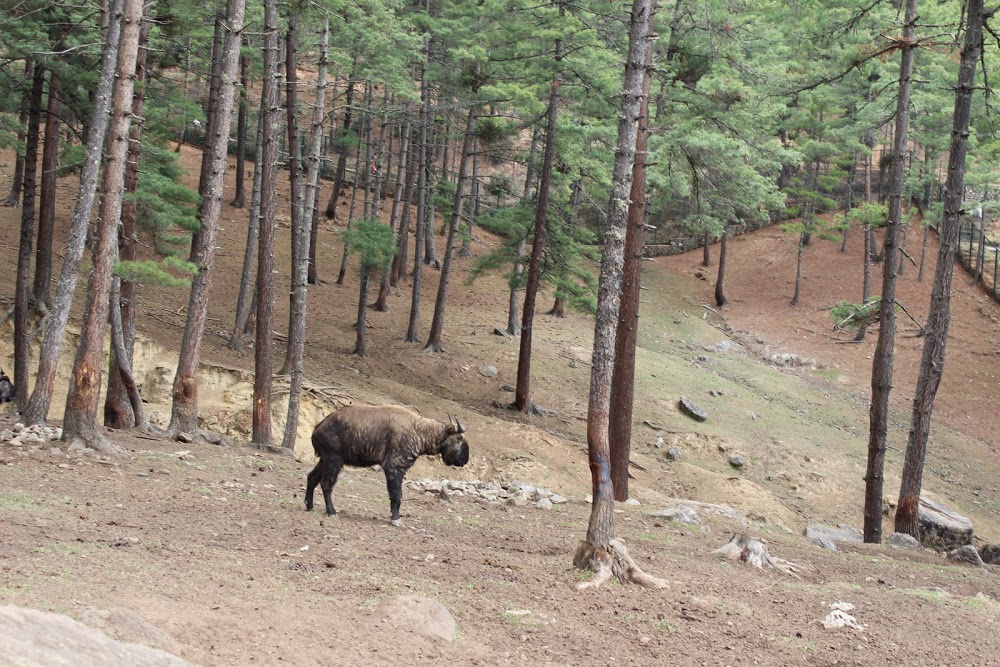
Takin-national animal of Bhutan

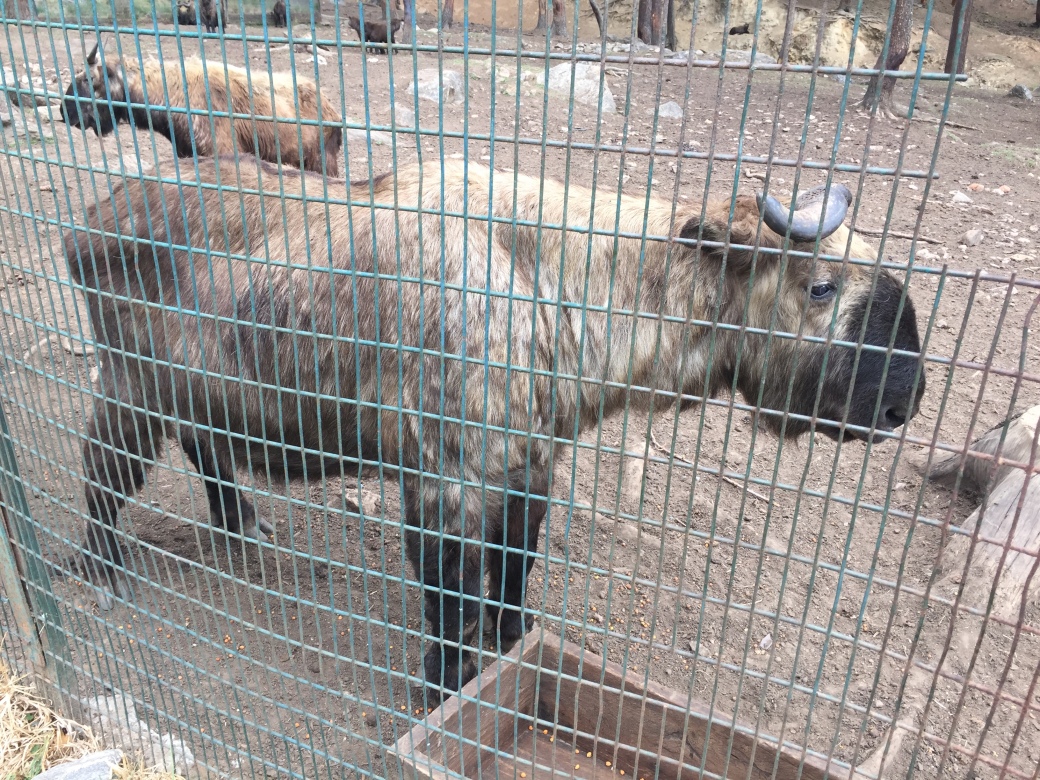
He looks melancholic
Can I leave Thimphu without seeing the famous dzong? Tashichho Dzong is the seat of the government and houses the throne room and office of the King,secretariat and ministries of finance and home affairs.It is also the headquarters of the central monastic body and their summer retreat.By the time I reached it was closed and I could only see the magnificent building and surrounding gardens from far..

Tashichho Dzong-Fortress of the glorious religion


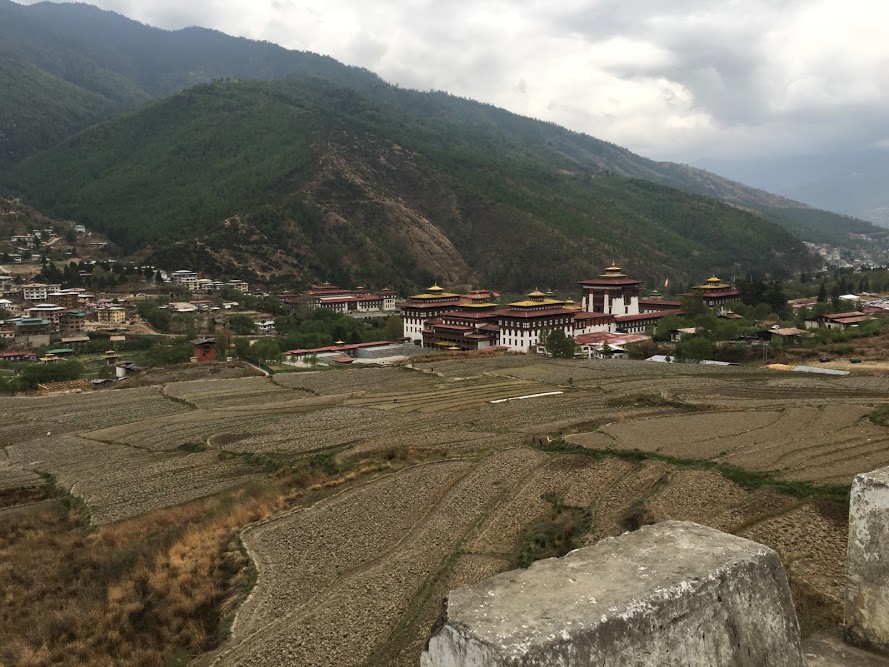
From the lookout point
It had been a memorable day and I went back to the hotel after a stroll in the central square.

Clock tower square at night



Great photos, and lots of interesting information. Thanks very much for posting this about a country I still know very little about.
LikeLiked by 1 person
Thanks for going through.We have a lot to learn from this small country.I hope they find the right balance between economic growth and preservation of traditions.
LikeLike
Excellent photos. I really like this place – and the Takins – they are really amazing animals.
LikeLiked by 1 person
Thank you.Bhutan is a lovely country with many surprises.
LikeLiked by 1 person
Yes. I can imagine that I would like it.
LikeLiked by 1 person
I love the photo of the National Memorial. Absolutely gorgeous. I love reading about your travels in Bhutan.
LikeLike
Thank you so much,Sue.
LikeLiked by 1 person
The Takin are adorable! Are the endangered? Is that why they are on a preserve & caged?
LikeLiked by 1 person
They are rare and endangered.Adorable and tame as well.Thank you,Resa.
LikeLike
beautiful and nice focus on details 🙂
LikeLiked by 1 person
Thanks for stopping by and leaving a lovely comment.
LikeLike
Great post dear Sidran, Thank you for taking me there… Love, nia
LikeLiked by 1 person
Thanks a lot,Nia.
LikeLiked by 1 person
Great post! Loved the pictures!
LikeLiked by 1 person
Thanks for stopping by.
LikeLike
Superb photos and amazing information.Thanks a lot.
LikeLiked by 1 person
Thank you very much.
LikeLike
Thanks for the good information and excellent photos
LikeLike
Thanks for going through.You should plan to visit Bhutan some day-ideal place for a nature lovers.
LikeLike
Your visit to Bhoutan is very interesting, the pictures are beautiful and the comments helpful. Thank you for sharing all of it with us.
LikeLiked by 1 person
Thanks for the visit& comment.Bhutan is like a beautiful tapestry created by nature.
LikeLike
Love also the photos of the fruit market.
LikeLiked by 1 person
Thank you,Marylou.Local markets are always very interesting and hard to resist.
LikeLike
A fascinating look into the daily lives and the local sights. I’m not sure I could eat chilli as if it were a vegetable, rather than a spice. I’d probably end up in hospital.
LikeLiked by 1 person
I did try; it wasn’t as hot as I feared. Thank you.
LikeLike